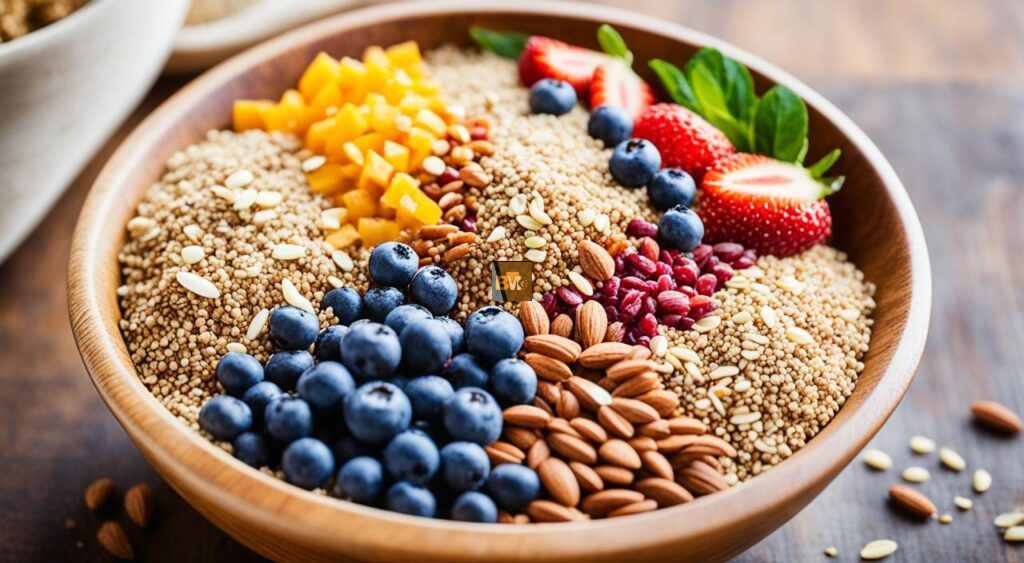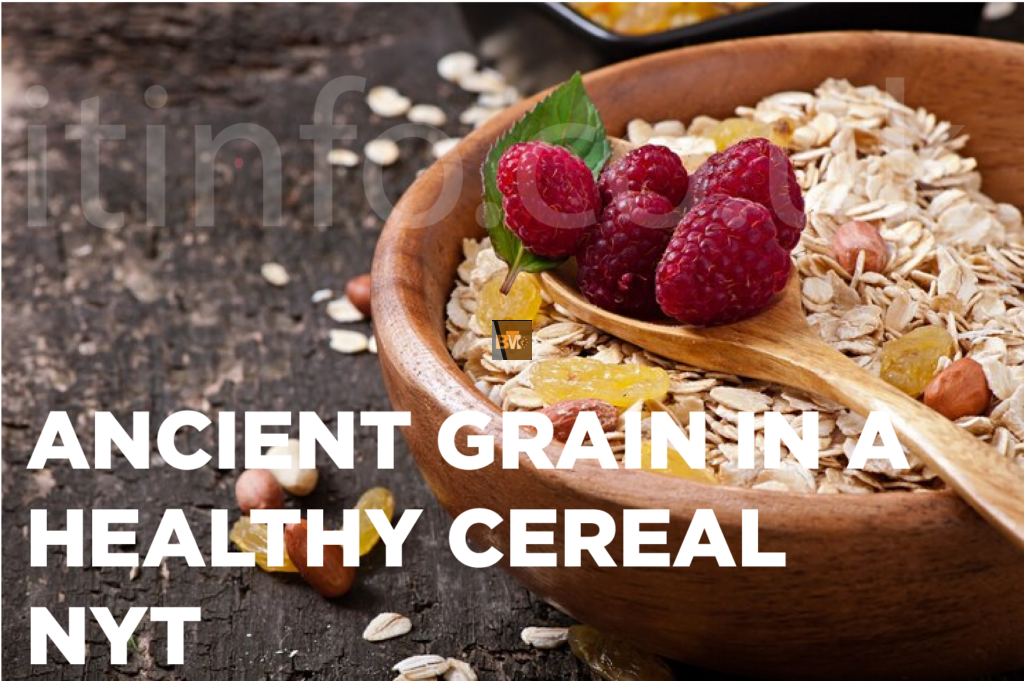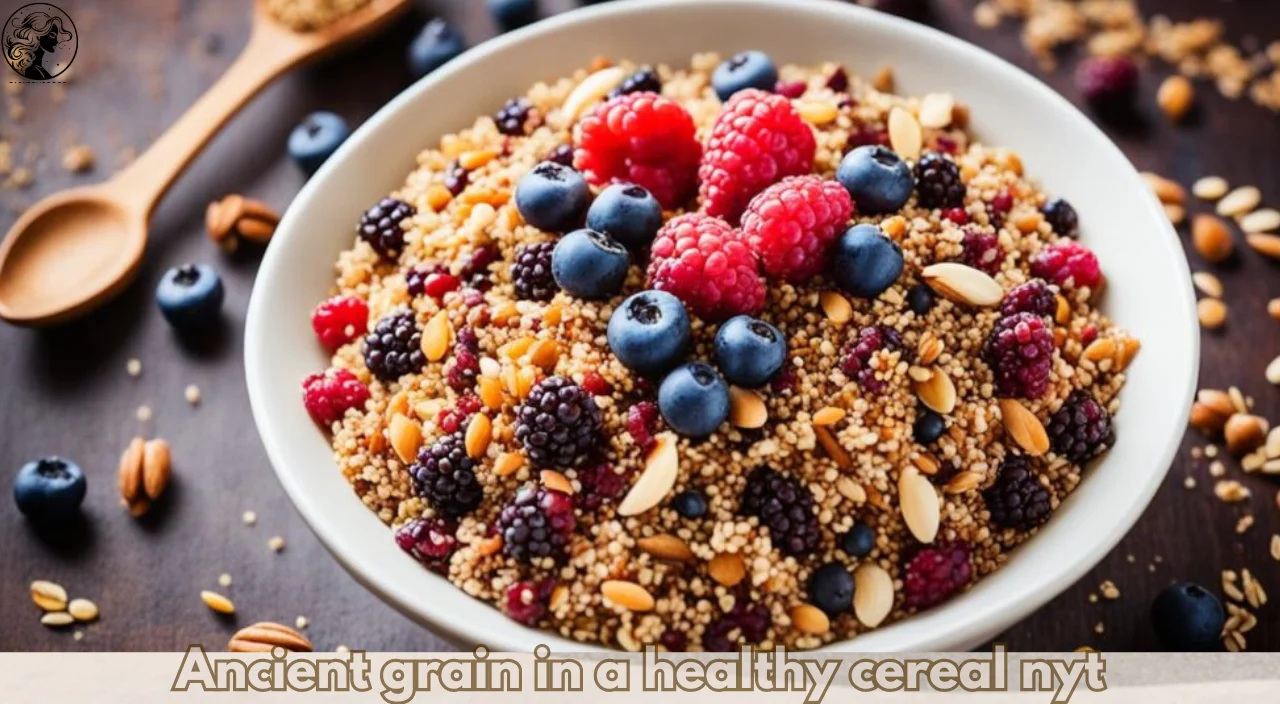In recent years, ancient grains have made a resurgence, particularly in the breakfast cereal aisle. People are increasingly interested in eating healthy, natural foods, and ancient grains perfectly fit the bill. But what exactly are ancient grains, and why are they considered better for your health? This article will explore the reasons why ancient grains can make your cereal healthier and why they’re becoming a staple in households across the United States.
What Are Ancient Grains?
Ancient grains are a group of grains and seeds that have remained unchanged for thousands of years. Unlike modern wheat, which has been bred for mass production, ancient grains have retained their original structure, making them nutritionally dense. These grains were a key part of ancient civilizations’ diets, from the Incas to the Egyptians, and they are now gaining popularity again due to their numerous health benefits.
Examples of ancient grains include quinoa, amaranth, millet, and teff, to name just a few. These grains are not only nutrient-rich but also versatile, making them easy to incorporate into modern meals. Ancient grains are packed with fiber, protein, vitamins, and minerals, making them a great choice for people looking to improve their diet.
Why Choose Ancient Grains for Breakfast?
Breakfast is often hailed as the most important meal of the day, and choosing the right foods can set you up for a successful day ahead. Incorporating ancient grains into your breakfast, particularly in cereals, provides several health benefits.
Ancient grains are loaded with essential nutrients such as fiber, which helps with digestion, and protein, which keeps you fuller for longer. This can be particularly beneficial in the morning when you need sustained energy. Many modern cereals are highly processed and filled with sugar, providing only empty calories. In contrast, cereals made with ancient grains offer a more balanced meal that promotes overall health.
Not only do ancient grains provide more nutrition, but they also offer a unique flavor profile. They add a nutty or earthy taste to your cereal, giving it a richer texture and flavor compared to highly processed grains. This makes your breakfast more satisfying and delicious.
Popular Ancient Grains in Cereal
As more people seek healthier options, many cereal brands have begun incorporating ancient grains into their products. Here are some of the most popular ancient grains used in cereals today:

Quinoa
Quinoa, often referred to as a superfood, is a complete protein, meaning it contains all nine essential amino acids that the body cannot produce on its own. This makes quinoa an excellent choice for vegetarians and vegans. It’s also high in fiber, magnesium, and iron, which contribute to better digestive health and energy levels. Quinoa cereals are light, slightly crunchy, and have a mild nutty flavor that pairs well with milk or yogurt.
Amaranth
Amaranth is another nutrient-dense grain that is rich in protein, calcium, and iron. It’s one of the few grains that contains lysine, an amino acid important for tissue growth and repair. Amaranth’s slightly peppery taste makes it a unique addition to cereals. It’s also gluten-free, making it an excellent choice for those with gluten sensitivities. Amaranth cereals are hearty and filling, providing sustained energy throughout the morning.
Millet
A millet is a small, round grain that has been consumed for thousands of years. It’s rich in magnesium, phosphorus, and antioxidants, which help reduce inflammation and support heart health. Millet has a mildly sweet and nutty flavor, making it perfect for cereals. It is also gluten-free, which makes it ideal for people with celiac disease or those who are trying to avoid gluten. When puffed or flaked, millet adds a satisfying crunch to breakfast cereals.
How to Choose Healthy Ancient Grain Cereals
With the rising popularity of ancient grains, many cereal brands have started marketing their products as “healthy” or “natural.” However, not all cereals are created equal. Here are some tips for choosing the healthiest ancient grain cereals:
- Check the ingredient list: Look for cereals that list whole grains, such as quinoa or amaranth, as the first ingredient. Avoid cereals that have added sugars or refined grains high on the list.
- Look for minimal processing: The less processed the grains, the better. Whole ancient grains retain more nutrients compared to heavily processed ones.
- Pay attention to sugar content: Some cereals add a lot of sugar to make them more palatable. Aim for cereals with less than 10 grams of sugar per serving.
- Consider organic options: If possible, choose organic cereals to avoid pesticides and genetically modified organisms (GMOs).
- Balance with protein and fiber: Ensure the cereal has a good amount of both protein and fiber. These help keep you full and satisfied.
Gluten-Free or Not?
One of the most common concerns people have when choosing ancient grains is whether they are gluten-free. Many ancient grains are naturally gluten-free, making them an excellent choice for those with celiac disease or gluten sensitivities.
Some popular gluten-free ancient grains include:
- Quinoa
- Amaranth
- Millet
- Buckwheat
- Teff
However, not all ancient grains are gluten-free. For example, spelled and farro are ancient forms of wheat and do contain gluten. Therefore, if you’re looking for gluten-free options, be sure to double-check the ingredients and labeling of the cereal you’re buying.
Fun Ways to Eat Ancient Grains
Ancient grains are incredibly versatile and can be incorporated into your diet in various ways. Here are some fun and delicious methods to add these grains to your daily routine:

In Cereal
The most common way to enjoy ancient grains is in breakfast cereals. You can find a variety of pre-made cereals featuring ancient grains like quinoa, amaranth, and millet at your local grocery store. Pair them with your favorite milk or yogurt, and add some fresh fruit for extra flavor and nutrition.
In Smoothies
Ancient grains can also be added to smoothies for an extra boost of protein and fiber. Quinoa or amaranth can be cooked and blended into your favorite smoothie recipes, providing texture and a nutritional upgrade. You can also find cereal blends that can be used in smoothies for a convenient, nutritious option.
As a Snack
Ancient grains are great as standalone snacks, too! You can make puffed quinoa or millet to snack on throughout the day or bake them into granola bars. Their natural sweetness and crunch make them a satisfying and healthy snack option. You can also find snack bars and crackers made with ancient grains that are perfect for on-the-go eating.
Ancient Grains Support Healthy Living
Incorporating ancient grains into your diet is a great way to promote long-term health and wellness. These grains are packed with nutrients that support a healthy heart, better digestion, and increased energy. Their high fiber content helps regulate blood sugar levels and keeps you feeling full longer, which can be beneficial for weight management. Additionally, the vitamins and minerals found in ancient grains, such as magnesium, iron, and B vitamins, are essential for maintaining overall health.
Whether you’re looking to improve your diet or just want to try something new, ancient grains offer a wide range of health benefits that make them a smart choice for anyone looking to live a healthier life.
The Bottom Line
Ancient grains are more than just a trendy food; they are a nutritious and delicious option that can make your breakfast healthier. Incorporating these grains into your cereal is an easy way to boost your nutrient intake, whether you’re looking for more fiber, protein, or vitamins. From quinoa to amaranth to millet, there are many ancient grains to choose from, and they offer a wealth of health benefits, particularly when compared to highly processed modern cereals.
As you explore the world of ancient grains, you’ll find they are not only healthy but also versatile and flavorful, making them an excellent addition to any meal, especially breakfast. So, next time you’re in the cereal aisle, consider reaching for an ancient grain-based cereal for a healthier start to your day.







Leave a Reply